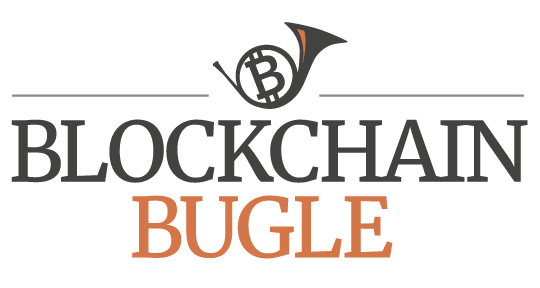How the Latest COIN ETF Amendment Could Hurt Its Investors (and Perhaps Harm Bitcoin Too)

Not everyone loves the latest draft of the Winklevoss Bitcoin ETF proposal.
The (prospective) Winklevoss Bitcoin Trust, also known as “COIN,” filed new documents to the U.S. Securities and Exchange Commission (SEC) last week. Leading up to the highly anticipated decision by the commission on whether the exchange traded fund (ETF) will be approved next month, the amendment added what is perhaps best described as a “hard fork clause.”
This hard fork clause has not won over everyone in Bitcoin’s technical community; the amendment was quickly criticized on social media like Reddit and Twitter. Specifically, some worry that the proposed method to pick a “winning” coin in the event of a coin-split may deprive future COIN investors. And it may, perhaps, even harm Bitcoin itself.
Hard Fork
The heart of the problem is a topic that has dominated the Bitcoin community for some time now: hard forks.
A hard fork is an expansion of Bitcoin’s protocol rules that is incompatible with existing rules. This makes hard forks risky: If not all users switch to the new protocol, Bitcoin can split in two. The result would be one network with the old set of rules and one network with the new set of rules, both with their own blockchain and their own distinct coin: a “coin-split.”
In a best-case scenario coin-split, users on one or on both sides of the chain rebrand. For example, when Ethereum experienced a coin-split due to a hard fork last summer, users that stuck to the existing protocol rebranded that chain as “Ethereum Classic.”
But in a worst-case scenario, users on both sides of the chain claim their chain to be the real thing. If that were to occur in Bitcoin, with no central foundation to hold a trademark, nor even an inventor active in the project, a dispute may not be that easy to resolve.
“Hard forks are protocol replacements,” Ciphrex CEO and Bitcoin Core contributor Eric Lombrozo said, summarizing the issue. “In the event of a coin-split, I believe the fair approach is that the chain that changes the rules has the burden of proving that stakeholders, and not just miners, are overwhelmingly behind it. However, there is no universally agreed-upon convention regarding which chain should continue to be listed under the same symbol.”
Nebulous CEO David Vorick — who had earlier commented on the ETF amendment on Reddit — agreed:
“The side of the chain that wins the title ‘Bitcoin’ is the side people start referring to as ‘Bitcoin.’ If not everyone agrees, you may just get a giant cultural war.”
Judging by the amendment, COIN could inadvertently establish itself as a central player in this potential “cultural war.”
COIN ETF
An ETF is an investment fund that holds assets like stocks, commodities or bonds, and trades on stock exchanges.
Cameron and Tyler Winklevoss — the twins of “The Social Network” fame — have been on a mission to create a bitcoin ETF for years. This ETF, COIN, would let institutional investors invest in bitcoin, without actually needing to buy or hold the digital currency themselves; these would be held by a custodian, Gemini.
The amendment to the COIN ETF filing submitted last week addresses the risk of hard forks. If the network splits, the amendment reads, the custodian will pick the side of the fork that has “the greatest cumulative computational difficulty for the forty-eight (48) hour period following a given hard fork.”
Or:
“If the Custodian, in consultation with the Sponsor, is unable to make a conclusive determination about which Bitcoin Network has the greatest cumulative computational difficulty after forty-eight (48) hours, or determines in good faith that this is not a reasonable criterion upon which to make a determination, the Custodian will support the Bitcoin Network which it deems in good faith is most likely to be supported by a greater number of users and miners.”
In other words: the “real” Bitcoin, for the ETF, will be the coin on the side of the chain that is backed by the most hash power after two days — unless the custodian decides otherwise.
Best Case
Perhaps a Bitcoin hard fork will be successful, with all hash power devoted to the new chain: hence, no coin-split.
But if there is a coin-split, it could get messy. Even in a best-case scenario, where one or both ends of the chain rebrand, ETF investors may be worse off than all other bitcoin holders.
Normally, all bitcoin holders will in that case have coins on both sides of the chain: they are tied to the same private keys. Similarly, anyone who held ether on the Ethereum blockchain before the split owned both ether (ETH) and classic ether (ETC) after the split.
The “hard fork clause” in the ETF amendment makes no mention of a potential minority chain at all, however.
“That will be a problem if the unchosen fork has value,” Bitcoin XT maintainer Tom Harding said. “ETFs have a net asset value that represents whatever underlies the ETF. In case of a coin-split, the value could be divided over two coins, not just one ‘winning’ coin, as the ETF amendment suggests.”
Indeed, in its current form, it seems the COIN ETF could lead to losses for investors.
Worst Case
And it gets worse if the split is not peaceful.
Contrary to a common misconception, hash power alone does not determine validity of a blockchain. Or, at the very least, not everyone agrees that it does. (On a conceptual level, the Bitcoin white paper contradicts itself on this issue in the first paragraph of chapter 11 and in the conclusion. On a technical level, hash power that does not conform to Bitcoin’s protocol rules is simply ignored by nodes enforcing these rules, as it is considered to be “not Bitcoin.”)
In contrast, the new ETF amendment does — at least in principle — establish hash power as a defining factor. This introduces significant risks.
If, for example, a majority of miners (by hash power) hard forks the protocol, and keeps this new chain running for 48 hours, they can impose any new rule they want. It would even allow them to create bitcoins out of thin air or attribute themselves bitcoins that never belonged to them.
Unsurprisingly, the idea that miners have the power to redefine Bitcoin is rejected by many within Bitcoin’s technical community.
“The existing statement that they will ‘support the fork with majority hash power after 48 hours’ is too mechanical and too reckless,” BitGo CTO Ben Davenport — who had earlier criticized the amendment on Twitter — told Bitcoin Magazine. “It could actually lead to gaming of the ETF by miners.”
Of course, the hard fork clause does itself offer an alternative as well. If the custodian — Gemini — determines in good faith that hash power majority is not a reasonable criterion, it can itself pick a “winning” side of the fork.
But this criterion hasn’t won over the critics either.
Blockstream CEO Dr. Adam Back had commented on the issue on Reddit before. Speaking to Bitcoin Magazine, he explained:
“I suppose the discretion clause might deter a hedge fund from gaming the system in an egregious way; it’s a sort of ‘get out’ clause in case someone does something crazy to game the hash rate. However, ideally discretion should be used only as a last resort. The realistic need to fall back on discretion in predictable circumstances may indicate a poor choice of rule.”
Moreover, just because the COIN ETF defines Bitcoin in a certain way doesn’t mean the rest of the world will. As such, by its own definition, it becomes questionable whether the COIN is even really a bitcoin ETF.
“The new terms as proposed by COIN basically say the ETF does not necessarily hold bitcoins,” said Luke Dashjr, the Bitcoin Knots lead developer and Bitcoin Core contributor who had criticized the amendment on Reddit as well.
“Instead, it holds whatever cryptocurrency has the most SHA2 proof of work within a short period after splitting off from Bitcoin,” he said. “As such, this ETF amendment is essentially mandating by law that a large chunk of formerly Bitcoin funds must choose to participate exclusively in an altcoin.”
Not generally known for holding back on his opinions, Dashjr concluded:
“As these rules are being enforced by the State, this ETF — if approved — is nothing short of a State actor attacking Bitcoin.”
Solutions
The new amendment has therefore dampened excitement of the prospected ETF, at least for some.
“I have had friends and family asking, and periodically re-asking, for ways to buy bitcoin via a broker for several years, as a gold-like asset class — I think there is no doubt the demand is there,” said Back. “However, this late-breaking amendment looks quite troubling, and maybe more than offsets the ETF benefit.”
Coming up with a solution to the problem, however, is not self-evident. While “Bitcoin” may need to be defined for an ETF to stand any chance of being approved, and some have tried to define it, not everyone agrees with this definition. Furthermore, no one has the authority to define it.
“My general sense is that trying to formalize a definition of a peer-to-peer cryptocurrency in a legal contract is extremely difficult,” Lombrozo said. “Peer-to-peer cryptocurrencies specifically attempt to sidestep jurisdictional issues by relying on the network incentives to maintain the proper checks and balances. Without the need for the intervention of courts.”
Alternatively, therefore, some suggested that the ETF may need to let go of its own strict definition of a “bitcoin ETF.” Instead, it could be a slightly more general ETF that is a bit more flexible.
Proposing a potential solution, Davenport said, “Here’s the basic rule I’d like to ensure is followed: for an investor, holding the ETF should be economically identical to holding bitcoin, minus fees. So if there is a fork, the investors must receive economic value for both sides of the fork. That could happen either through a dividend, through a split of the ETF itself, or through the ETF continuing to hold both sides of the fork in a 1:1 ratio.”
In any case, several critics of the current proposal agreed that the ETF shouldn’t be rushed if these issues aren’t resolved. While the SEC has a self-imposed deadline for their decision on the COIN ETF for March 11, that shouldn’t be reason to accept questionable clauses.
“Bitcoin will grow into these kinds of setups,” Vorick concluded. “And if it’s not ready for it this year, then maybe in two or three years, when people understand this stuff better. But it would be terrible if it got approved and then something bad happens. That would be worse than waiting.”
Back agreed: “I’m excited that ETFs appear to be making progress, but I’m really hoping structural problems like this are rectified in time before approvals happen.”
Bitcoin Magazine reached out to several people close to or involved with COIN, but has received no response at time of publication.


